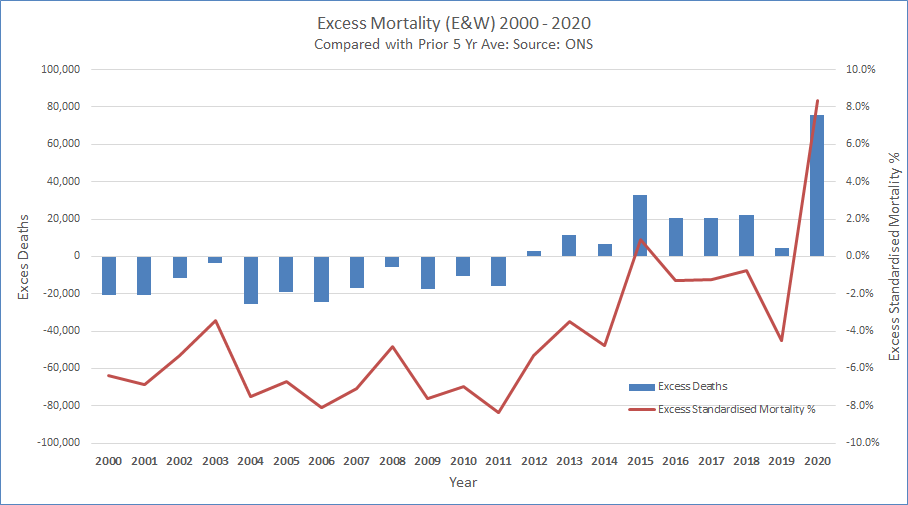
The latest @ICNARC report on intensive care activity on behalf of @COVID19actuary, starting with the clearest evidence possible that this has not been "just another flu winter", even with non-COVID activity down.
Patient numbers have been close to double last Jan.
1/15
Patient numbers have been close to double last Jan.
1/15

Unlike April, this peak has come after a sustained period of increased activity throughout the Autumn too, with the cumulative number of patients now exactly double that admitted in the first wave. This can be seen in the occupancy stats next too.
2/15
2/15

It's really worth emphasising that although the peak has passed in terms of admissions, the overall numbers in ICU are still exceptionally high, and remain at first wave peak levels.
Note also that this second wave timeline is now as long as the first.
3/15
Note also that this second wave timeline is now as long as the first.
3/15

With daily case numbers falling rapidly it's of note that there were still over 2000 ICU admissions in the last fortnight. Even with lower prevalence in the community and vaccinations, we expect units to continue to be busy for some time yet.
4/15
4/15

The age distribution here gives a clue why. Only a small proportion of admissions are in relation to the age groups vaccinated so far. It's only now we are starting to get into the under 70 groups that, in due course, there will begin to be a meaningful effect on numbers.
5/15
5/15

Just the flu or pneumonia? Hardly. Admissions in Jan have been between 5 and 6 times normal pneumonia levels, so even allowing for the drop off in those, this can't just be a case of misattribution or replacement of one illness by another.
Flu next.
6/15
Flu next.
6/15

Note the flu scale is ten times smaller, so these numbers wouldn't really be material in comparison to the previous graph in any event. There's little or no flu this year, as is well understood, but even the exceptional peak of 600 in Jan 19 is only 6% of COVID admissions.
7/15
7/15

It's concerning that we are seeing significantly lower levels of heart related admissions again, along with slightly lower admissions for strokes.
Is this to do with lower activity in lockdown reducing actual cases, or that they are not being presented for some reason?
8/15

Is this to do with lower activity in lockdown reducing actual cases, or that they are not being presented for some reason?
8/15


Similarly for trauma and self harm. It's certainly possible that there are fewer serious accidents due to lower activity. On self harm, there continues to be no evidence in this data that there has been an increase during lockdowns.
9/15

9/15


We continue to see the stark disparity in the level of admissions for the most deprived. This is likely to be reflective of many factors, relating to cramped living conditions, employment and ethnicity, all of which are linked.
10/15
10/15

Another indication of the pressure that units have been under is the increasing number of transfers, with London, maybe not surprisingly seeing the greatest numbers.
11/15

11/15


So far in the second wave, in broad numbers around a third of the 21,859 patients have been completely discharged, a third have died, and a third are still either in ICU or acute hospital. Hopefully those now transferred to acute hospital beds are now recovering.
12/15
12/15

Next 28 and 90 day survival curves, which after looking favourable in comparison to the first wave a couple of months ago are now broadly similar, with over 40% of patients not having a favourable outcome.
13/15

13/15


By age though, there are slight improvements at some ages and more significant ones for the 50-59 and 70+ age groups. That suggests the older average age of patients (around 2 years) balances out improvements in care to give the overall similar outcome we've just seen.
14/15
14/15

With over 100 pages there is much more information than summarised here.
icnarc.org/Our-Audit/Audi…
Sincere thanks to all intensivists and indeed all health service staff for their continuing and sustained exceptional efforts to save lives during the pandemic.
15/15 END
icnarc.org/Our-Audit/Audi…
Sincere thanks to all intensivists and indeed all health service staff for their continuing and sustained exceptional efforts to save lives during the pandemic.
15/15 END
• • •
Missing some Tweet in this thread? You can try to
force a refresh















